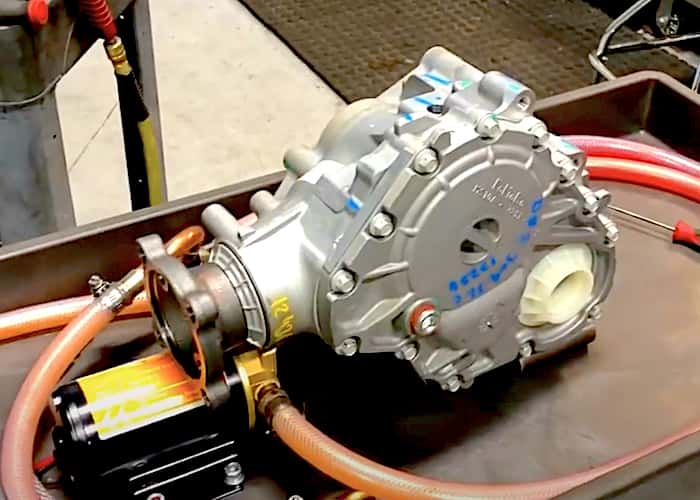DIY Projects for the Home Mechanic
Lately we’ve been covering some DIY projects involving engine oil and sealed transmission fluid servicing that are well within the capabilities of most home mechanics looking to save money and avoid notorious service center scams and/or incompetency’s.
To extend our coverage of what you can do with your car through maintenance and care to extend the life of your vehicle and ensure safer driving, today we are taking a look at the power transfer unit (PTU) on the Ford Escape with the help of a new video that shows just how easy it is to do it yourself.
The Power Transfer Unit
The PTU is an all-wheel drive (AWD) transfer case used in many cars and sport utility vehicles. The job of the PTU is to take the rotation of the axle in the back of the vehicle and transfer the power to the front. This allows for power to be applied to all four wheels either part time or full time, and can also vary just how much power is applied to the front and rear depending on specific driving conditions.
PTUs undergo a significant amount of constant heat exposure from the nearby transmission, engine block and catalytic converter. Containing only a quart of oil to lubricate and cool its moving parts, they are known to eventually overheat and fail relatively early in a car’s life.
The most common failure with PTUs are leaks from the intermediate shaft and input shaft seals. If your problems with a PTU are leak-based, then you can expect a repair bill between $400 and $600. However, if the internal components are damaged, you can expect a much higher repair bill typically involving a total replacement of the PTU---similar to the one pictured below:

Symptoms of a failing or failed PTU include hearing a grinding, growling, or humming noise that changes with your vehicle’s speed, which can be the result of low fluid from a leak and/or bad bearings, loose chains and damaged gears. If the PTU has gone bad then you will unlikely be able to drive the vehicle. However, if the PTU is only moderately damaged, it may still be somewhat mobile, but likely severely underpowered. Do not try to drive like this! The chances are pretty good doing so will result in damaging the rear axle, resulting in an even larger repair bill.
PTU Maintenance
Although your vehicle owners’ manual may not say anything about maintaining your PTU with periodic oil changing, automotive experts agree that since the oil undergoes so much heat exposure that changing the PTU fluid every 30,000 miles is prudent with PTU care.
That said, here is an informative video recently released that demonstrates how to change the PTU fluid in a Ford Escape with all-wheel-drive.
2020+ AWD Ford Escape: Power Transfer Unit Service Procedure
And finally…
For more about car maintenance, repair and care, be sure to take a look at how to maintain a healthy battery and what you should look for to avoid buying a water damaged used car after it has been in a hurricane.
COMING UP NEXT: Buying a used car? Do this one test above all others before deciding to buy one.
Timothy Boyer is Torque News automotive reporter based in Cincinnati. Experienced with early car restorations, he regularly restores older vehicles with engine modifications for improved performance. Follow Tim on Twitter at @TimBoyerWrites for daily automotive-related news.











